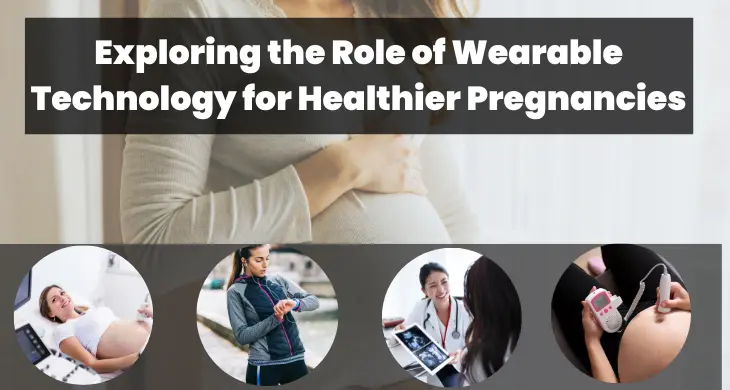Prenatal monitoring plays a crucial role in ensuring the health and well-being of both expectant mothers and their unborn babies. Traditionally, prenatal monitoring has relied on periodic visits to healthcare providers for check-ups and tests. However, advancements in wearable technology have opened up new possibilities for continuous and remote monitoring during pregnancy. This article explores the role of wearable technology in prenatal monitoring and its potential to contribute to healthier pregnancies and improved maternal and fetal outcomes.
The Evolution of Prenatal Monitoring
Prenatal monitoring has significantly evolved over the years, from relying solely on physical examinations to incorporating various tests and screenings. These include ultrasound scans, blood tests, and fetal heart rate monitoring. While these methods provide valuable information, they offer only periodic snapshots of the pregnancy and may not capture real-time changes and fluctuations.
The Rise of Wearable Technology in Prenatal Monitoring
Wearable technology, such as smartwatches, fitness trackers, and specialized pregnancy monitoring devices, has emerged as a promising tool for continuous and remote prenatal monitoring. These devices are designed to be worn comfortably throughout the day, collecting and analyzing data related to maternal health, fetal movements, heart rate, sleep patterns, and even contractions. The data can be transmitted wirelessly to healthcare providers, allowing them to monitor pregnancies more closely and make timely interventions when necessary.
Benefits of Wearable Technology in Prenatal Monitoring
Incorporating wearable technology in prenatal monitoring offers several potential benefits:
- Continuous Monitoring: Wearable devices enable continuous monitoring of key parameters, providing a more comprehensive and detailed understanding of maternal and fetal well-being. This allows for early detection of potential complications and timely intervention, leading to better outcomes.
- Convenience and Accessibility: Expectant mothers can conveniently wear the devices and collect data in their daily lives, reducing the need for frequent visits to healthcare facilities. This is particularly advantageous for individuals in remote areas or those with limited mobility.
- Enhanced Patient Engagement: Wearable technology empowers expectant mothers by actively involving them in their prenatal care. The ability to monitor their own health and track fetal movements fosters a sense of connection and engagement, promoting a proactive approach to pregnancy management.
- Early Warning Signs: Wearable devices can detect subtle changes or patterns in maternal and fetal health indicators, enabling early identification of potential complications. This early warning system can lead to prompt medical interventions and personalized care.
- Remote Monitoring and Telemedicine: Wearable technology facilitates remote monitoring of pregnancies, allowing healthcare providers to assess patients’ health status and intervene as needed without the need for in-person visits. This is especially valuable in situations where travel or access to healthcare facilities is challenging.
Frequently Asked Questions (FAQs)

Ques: Is wearable technology safe to use during pregnancy?
Answer: Most wearable devices, such as smartwatches and fitness trackers, are considered safe for use during pregnancy. However, specialized pregnancy monitoring devices should be used as per healthcare provider recommendations to ensure safety and accuracy.
Ques: What parameters can wearable technology monitor during pregnancy?
Answer: Wearable technology can monitor various parameters, including maternal heart rate, fetal movements, sleep patterns, contractions, and in some cases, even blood pressure and oxygen levels.
Ques: Do wearable devices replace regular prenatal check-ups?
Answer: No, wearable devices do not replace regular prenatal check-ups. They serve as complementary tools for continuous monitoring, but regular visits to healthcare providers are essential for comprehensive prenatal care.
Ques: How can wearable technology improve maternal and fetal outcomes?
Answer: Wearable technology enables early detection of potential complications, facilitates personalized care, and promotes timely interventions. This can lead to better management of pregnancies, potentially improving maternal and fetal outcomes.
Ques: Are there any limitations or challenges associated with wearable technology in prenatal monitoring?
Answer: Wearable technology is still evolving, and there are limitations to consider. These include accuracy of data, device compatibility, user compliance, privacy concerns, and the need for healthcare provider interpretation of the collected data.
Ques: Are wearable devices covered by insurance for prenatal monitoring?
Answer: Insurance coverage for wearable devices may vary. It is advisable to consult with insurance providers and healthcare professionals to determine coverage options.
Conclusion
Wearable technology has the potential to revolutionize prenatal monitoring by offering continuous, remote, and personalized care for expectant mothers. By providing valuable insights into maternal and fetal health parameters, wearable devices can contribute to healthier pregnancies and improved outcomes. However, it is important to consider the limitations and seek guidance from healthcare professionals for the appropriate use of wearable technology in prenatal monitoring. As technology continues to advance, the future of prenatal monitoring looks promising, promising a new era of proactive and data-driven prenatal care.

